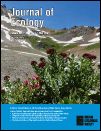Chen et al., 2018
Root morphology and mycorrhizal type strongly influence root production in nutrient hot spots of mixed forests
Chen, W., Koide, R. T., Eissenstat, D. M. (2018)
Journal of Ecology, 106:148-156
-
Shale Hills, INVESTIGATOR
Abstract
1. Plants compete for nutrients using a range of strategies. We investigated nutrient foraging within nutrient hot-spots simultaneously available to plant species with diverse root traits. We hypothesized that there would be more root proliferation by thin-root species than by thick-root species, and that root proliferation by thin-root species would limit root proliferation by thick-root species.
2. We conducted a root ingrowth experiment in a temperate forest in eastern USA where root systems of different tree species could interact. Tree species varied in the thickness of their absorptive roots, and were associated with either ectomycorrhizal (EM) or arbuscular mycorrhizal (AM) fungi. Thus, there were thin- and thickroot AM and thin- and thick-root EM plant functional groups. Half the ingrowth cores were amended with organic nutrients (dried green leaves). Relative root length abundance, the proportion of total root length in a given soil volume occupied by a particular plant functional group, was calculated for the original root population and ingrowth roots after 6 months.
3. The shift in relative root length abundance from original to ingrowth roots was positive in thin-root species but negative in thick-root species (p < .001), especially in unamended patches (AM: +6% vs. −7%; EM: +8% vs. −9%). Being thin-rooted may thus allow a species to more rapidly recolonize soil after a disturbance, which may influence competition for nutrients. Moreover, we observed that nutrient additions amplified the shift in root length abundance of thin over thick roots in AM trees (+13% vs. −14%), but not in EM trees (+1% vs −3%). In contrast, phospholipid fatty acid biomarkers suggested that EM fungal hyphae strongly proliferated in nutrient hot-spots whereas AM fungal hyphae exhibited only modest proliferation.
4. We found no evidence that when growing in the shared patch, the proliferation of thin roots inhibited the growth of thick roots.
5. Synthesis. Knowledge of root morphology and mycorrhizal type of co-existing tree species may improve prediction of patch exploitation and nutrient acquisition in heterogeneous soils.
Citation
Chen, W., Koide, R. T., Eissenstat, D. M. (2018): Root morphology and mycorrhizal type strongly influence root production in nutrient hot spots of mixed forests . Journal of Ecology, 106:148-156. DOI: 10.1111/1365-2745.12800
 This Paper/Book acknowledges NSF CZO grant support.
This Paper/Book acknowledges NSF CZO grant support.
Explore Further


